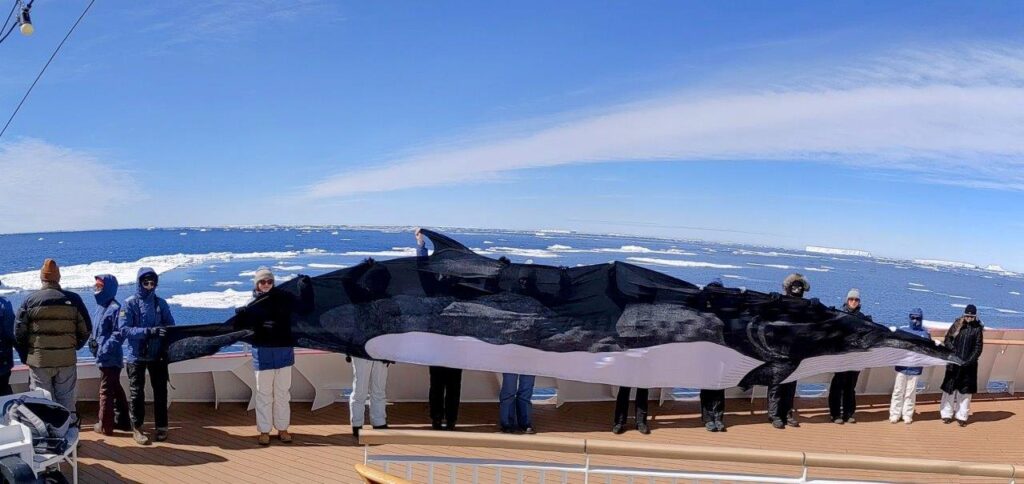The emperor of the 7th continent
5th January 2025 Weddel Sea
The 5th of January had an exceedingly early but wonderful start. At around 12:20 AM, for those who were awake, there was a sighting of three orcas that came within 500 meters of the ship! The excitement did not end there, however. With a wake up off the coast of James Ross Island around 6:30 AM we were pleased to see that we had sailed to an area surrounded by sea ice. After a 7:00 AM breakfast we got ready for a 45-minute zodiac cruise off Cape Gage at the northern end of Admiralty Sound.


With glass-like conditions, we loaded up on the zodiacs and set off to explore the area. We saw Adelie penguins on the ice as well as in the water, but the best was still in store. Cruising up to an area that had attracted a few of the other zodiac groups we spotted two penguins that did not resemble the other Adelies we were seeing. Once we got closer, we saw that the two larger penguins we were looking at were emperor penguins! The two emperors were youngsters who had only hatched last year and were learning to be independent.

After finishing the stunning ice cruise and after more emperor views from the ship, the zodiacs were packed up and the ship began to sail north.The journey to the Falkland Islands has begun. With the ship moving it was back to marine mammal and sea bird surveys. Conditions started nice with lots of ice, however, the wind picked up. We still spotted some seals on ice (most likely Weddell seals) and some humpback whales, and the icy scenery was stunning. We also saw another emperor penguin on an ice floe next to an Adelie penguin which made for a nice size comparison.

Additionally, we also spotted Wilson’s storm petrels, giant petrels, and cape petrels feeding on a seal cadaver. We also brought out our life-sized minke whale in the hope that this would bring about a few more whale sightings.

As we headed out of Antarctic Sound into the Bransfield Strait we also cruised by massive tabular icebergs being pushed out from the Weddell Sea by currents and wind. The wind had picked up substantially but surveys continued until around 8:30 PM with students taking turns to head for dinner. We finished the day up with the usual team meeting and also received orders from the bridge to secure our rooms and store any items that may shift during rough seas. Tonight, we hope tomorrow brings calm seas…
written by Justin


I love emperors penguins! Emperor penguins endure the harshest conditions encountered by any endothermic animal on earth. They live and breed on the coast where the temperatures vary between 0 and -15C. Even worse, the southern blown wind from the coreless winter can be as cold as -50C. Typically their breeding and incubation last from May through to October. They are the only species known to lay their eggs directly onto the ice before coddling the egg with their feet. Mates act in turns between one mate feeding and hunting for their partner while the other watches over the chick. The walk from the sea to the colony occurs when the sea ice is at its fullest and can be as long as 100miles. Mortality rates are high as many eggs don’t hatch with 25% dying afterwards Is the purpose of the life sized minke whale to attract other whales? Given a whale's use of underwater calls do you also implement a sounding device in the hopes to attract the whales?